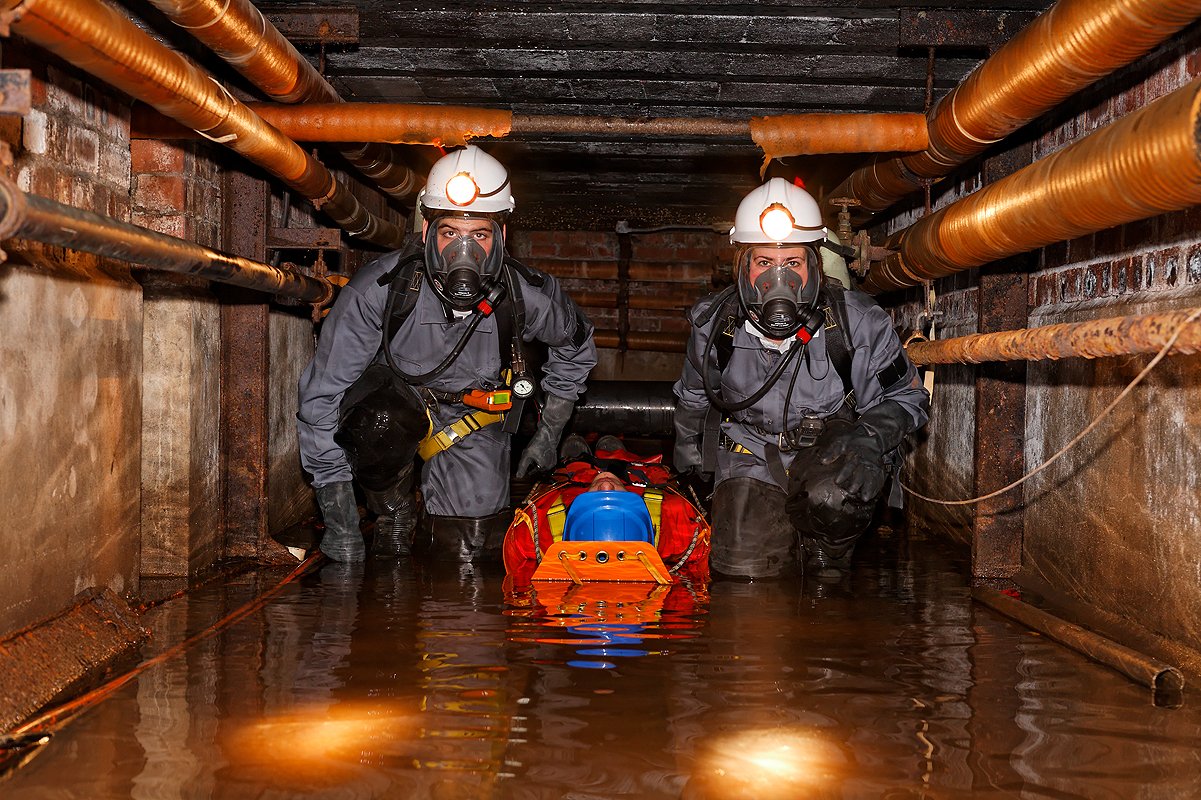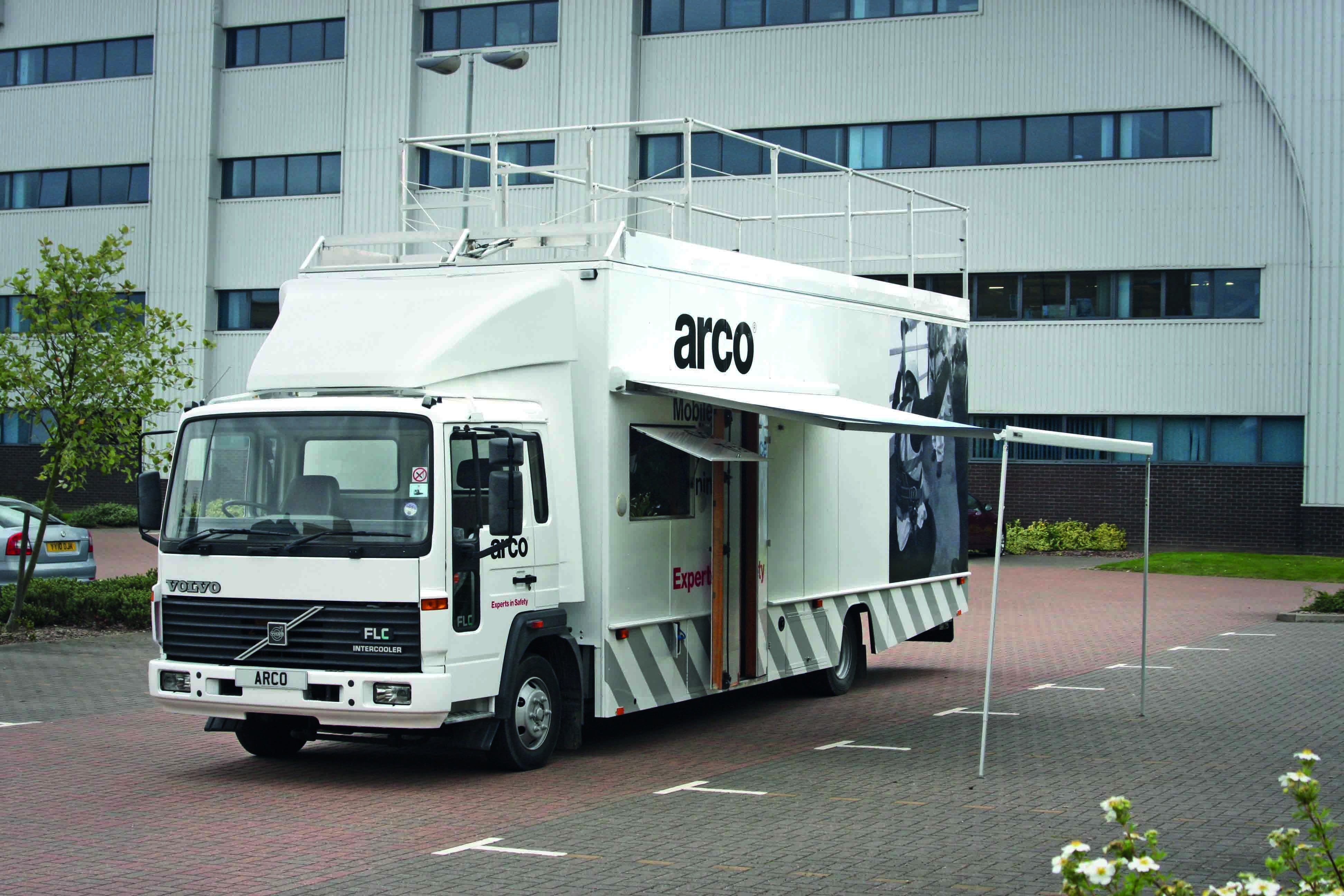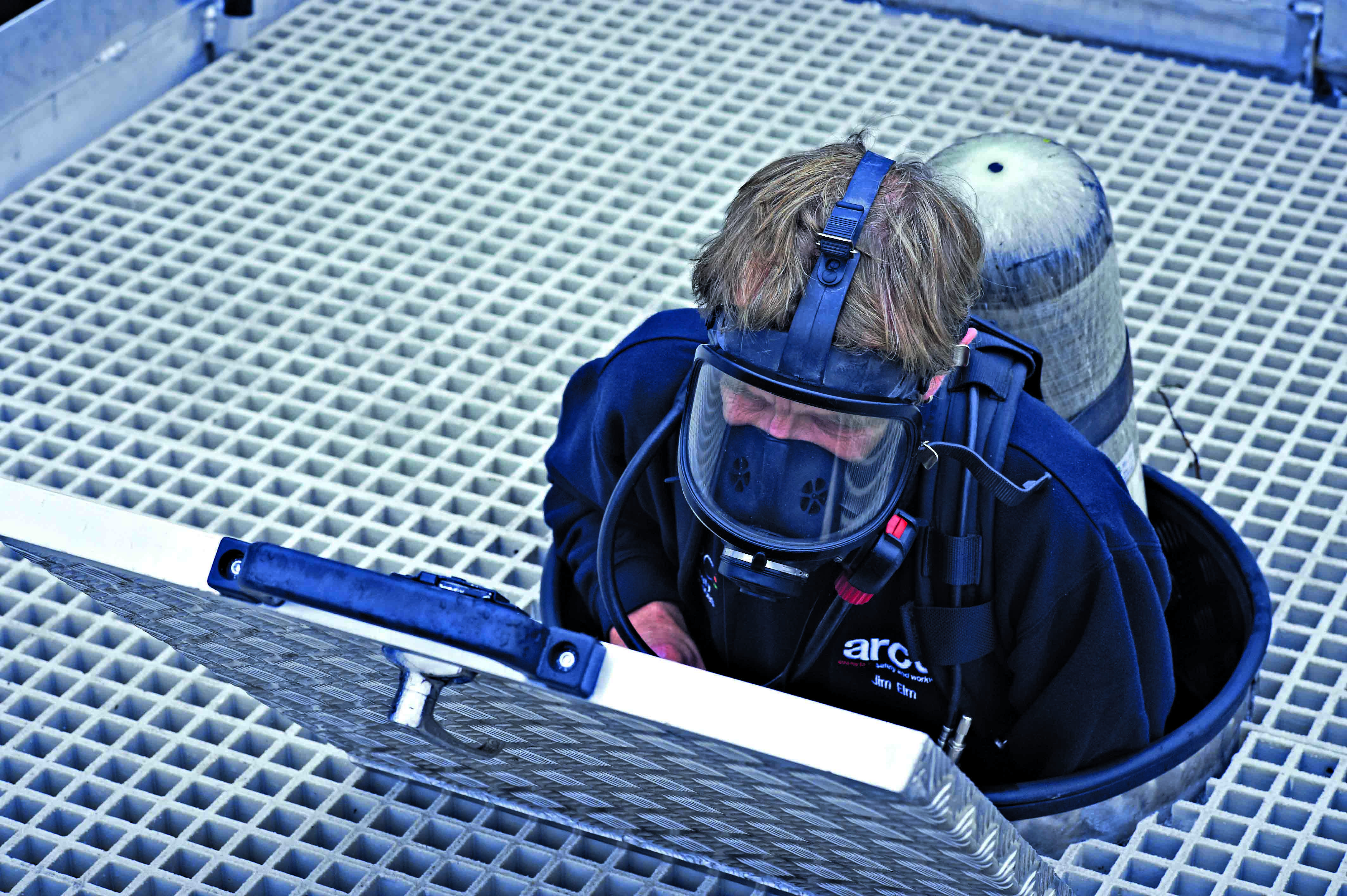Q&A: everything you need to know about confined spaces
Confined spaces pose a wide variety of potential hazards to those workers that are required to enter them, so recognising the dangers is a key form of defence. Here Ken Smith, consultant for Arco Training & Consultancy, highlights what hazards need to be addressed and the solutions available to best protect those on the front line.

Why do I need to be aware of the dangers of confined space working?
There are many potential dangers for those working in confined space environments, which can have catastrophic implications and sometimes even result in fatality if the correct precautions are not taken. It’s therefore imperative that businesses ensure that their staff not only understand what dangers to look out for, but are able to work safely within their environments and know how to quickly respond to any dangerous situations that could arise. Addressing these areas in advance will significantly improve the safety and health of any employees that may be at risk.
How is a confined space defined?
There’s a lot more to defining a confined space than many people may initially think and identification is an essential part of the process. It’s easy to assume that a confined space is a small, enclosed area, however, a confined space can include a variety of environments such as large chambers, tunnels or tanks; any space that is substantially enclosed could present a risk, whatever its size.
The Specified Risks identified in the Confined Spaces Regulations 1997 are:
- Serious injury arising from a fire, explosion or excess of oxygen
- Loss of consciousness arising from an increase in body temperature
- Loss of consciousness or asphyxiation arising from gas, fume, vapour or the lack of oxygen
- Drowning arising from an increase in the level of liquid
- Asphyxiation arising from a free flowing solid or the inability to reach a respirable environment due to entrapment by a free flowing solid
Under this definition, if an area is substantially enclosed and also presents a reasonably foreseeable risk of one or more of the specified risks, then it should be defined as a confined space.
Employers must adequately protect their staff and provide them with the correct knowledge and tools to ensure that they return home safely at the end of each day.
What responsibility do I have as a business?
Every business has a duty of care to its employees to keep them safe while at work, and this is especially important when confined space working is required.
In the UK, the Confined Space Regulations 1997 is the legislation specifically developed for this type of work. The Regulations and Approved Code of Practice L101 (ACoP) must be considered before any attempt to enter a confined space and emphasise the importance of understanding the environment as well as providing staff with a practicable method of completing the work in a safe way.
One of the key requirements of the Confined Space Regulations 1997 is for employers to find a reasonably practicable method of completing the work in the confined space without entry. Where this is not possible, action must be taken to ensure a safe system for working. Through a full risk assessment, an employer is then able to make an informed decision on what specific training, PPE and safety equipment will be needed to keep employees safe.
 What are the main hazards workers could face?
What are the main hazards workers could face?
The potential hazards confronting workers in confined spaces are varied and wide. The first step would be to identify whether the space is hazardous before entry and if there is a reasonably foreseeable risk of hazards occurring during the job.
The person in charge of the proposed work in the confined space needs to ascertain whether flammable substances or oxygen enrichment is present. They need to: check for excessive heat; monitor for the presence of toxic gases, fumes and vapours; assess the risk of oxygen deficiency; and assess the possibility of the space filling with any liquid during entry, and the possibility of entrants becoming engulfed in free-flowing solids, for example granular materials.
There may be additional hazards present in the space being assessed for entry, such as mechanical and electrical equipment, and these must also be dealt with under their own relevant regulations.
Consideration must always be given to the need to deal with an emergency during a confined space entry, and also that this may mean rescuing an injured or incapacitated person from the space.
However, it’s important to remember that this list is not exhaustive and that confined spaces undeniably pose a wide variety of potential hazards. To help identify them, Arco has published an Expert Guide that provides comprehensive guidance and advice for use against the various occupational risks.
What happens if these hazards are ignored?
If hazards are ignored in dangerous working environments such as confined spaces, this could lead to worker injury or even death.
For any business that fails to properly protect its workforce and ignores the regulations, serious consequences can occur, especially with the introduction of the tougher Sentencing Guidelines earlier this year. It is therefore imperative that any business that requires its staff to work within a confined space follows the Confined Space Regulations 1997, conducts a full risk assessment and considers all the potential hazards that its workers may face, before taking action to ensure all safety precautions are in place before any entry, such as the correct monitoring, ventilation, and access to trained personnel and the correct maintained equipment.
How can I protect my staff?
The saying ‘failing to prepare is preparing to fail’ is pertinent to confined space working as advanced planning is crucial. Employers must adequately protect their staff and provide them with the correct knowledge and tools to ensure that they return home safely at the end of each day.
Comprehensive training is essential to prepare employees for confined space working and there are many options available, including accredited courses and bespoke programmes to suit individual businesses. It is important to remember that anyone assessing, managing and supervising confined space work also needs to be suitably trained to carry out their part of a safe confined entry. The regulations identify the ‘competent person’ as being the person making the critical decisions about entry and the protective measures to be taken.
Employers must select personnel who are ‘suitable’ to enter and work in confined spaces and these people must undergo adequate training in what to expect. Employees must also be informed about the correct use of any tools or personal protective equipment (PPE) that they will require to do their job.
What solutions are available?
A wide range of solutions are available for businesses that must operate in confined spaces, including advice on the identification of confined spaces from industry experienced specialists, help and advice with developing safe systems of entry, developing training packages relevant to the confined space entry being planned, and advising on the selection, supply and use of all the necessary equipment.
Employee training to deal with everything from preparation to emergencies is always required if confined space entry is to take place. The training must include a theoretical understanding of all the confined space hazards, risks, methods of protection and keeping safe in confined spaces, including safe systems of work and permits to work etc.
Realistic practical training is also required which safely simulates the conditions likely to be experienced during entry into the confined space. This training could include: observational suitability checks (i.e. for claustrophobia); developing a safe working system; and selecting, checking and using equipment, including monitoring and respiratory protection equipment. Training can also include the initiation of hazard response including self-rescue or full, third party type, rescue, remembering that organisations have to provide their own arrangements for rescue, and cannot just rely on the emergency services. Simulation type exercises give trainees the necessary skills and confidence needed to work in confined space environments.
Specialist accredited training courses for workers cover areas such as: entry methods, hazard identification, safe systems at work, and rescue. Additionally, consultancy advice at management level, employee medicals, face-fit testing and equipment maintenance are all solutions available to businesses.
 Can rescue teams be outsourced when required?
Can rescue teams be outsourced when required?
In an emergency situation, there is no room for doubt and timing is often crucial. For businesses that don’t have that expertise to hand in house, engaging the services of a specialist third party contractor could help to prevent potentially fatal situations. It can also be a more cost-effective method, as the resources required to train a team to such standards would be quite extensive.
Arco provides 24/7 dedicated standby rescue teams and specialist confined space rescue consultants who are highly experienced in confined spaces safety and provide both ‘entry’ and ‘non-entry’ rescue solutions to businesses.
Why is situational training important?
Confined space environments can be overwhelming, so adequate preparation is of paramount importance to avoid tragedies. Providing a safe way to condition workers in what to expect in confined spaced environments prior to entry is an effective training method.
Practicing working in a simulated industrial environment that represents real-life working conditions, such as local industrial and environmental noise, simulated smoke and gas release, varying temperatures and environmental smells, will help to prepare workers for that type of hazard and risk whilst working in a confined space. This method is beneficial to help to build employee confidence and awareness before tackling hazardous situations.
Can training be conducted on site?
As part of the confined spaces training solutions provided at Arco, we have Mobile Confined Spaces Units that provide a flexible training method at a location of your choice.
The Mobile Confined Spaces Unit can be fully-configured to suit your business’ particular requirements on-site and is an effective training tool. As well as bespoke configurations, such as those referred to above, the unit features live-monitoring and videoing that can be viewed by colleagues on screen as part of the training process. Learning through experience is often a powerful training tool and the mobile units provide a safe environment to do this.
Additionally, the unit can be used for face-fit testing checks and breathing apparatus maintenance on-site, providing a convenient one-stop-shop solution for businesses.
How often should I provide training?
Refresher training will be required periodically and its timing will depend on the continued experience after initial training. Additionally, personnel will need training on the use of equipment involved in safe confined space entry such as gas monitors, breathing apparatus and PPE.
Of course, each employee is different and may have varying training needs, so it is important to look at the training records for each employee and to look for any gaps that may need to be addressed.
Additionally, as confined space working is varied, it is important to assess the location and any new hazards that may need to be tackled, such as working at height, where additional specialist training would be required.
For those who are responsible for or work in confined spaces, Arco offers courses that are accredited by City and Guilds or NCFE. To find out more about the certification we can provide, visit www.arco.co.uk/confinedspaces or call the dedicated Arco Training and Consultancy team on 01482 611769.
Q&A: everything you need to know about confined spaces
Confined spaces pose a wide variety of potential hazards to those workers that are required to enter them, so recognising
Safety & Health Practitioner
SHP - Health and Safety News, Legislation, PPE, CPD and Resources Related Topics
Company fined £360k after trapped worker loses life
Future-proofing safety: Five trends shaping the PPE landscape of tomorrow
Arco backs SHP campaign for PPE inclusivity



